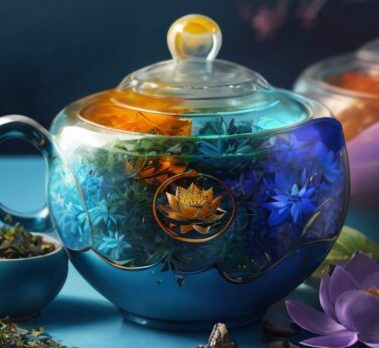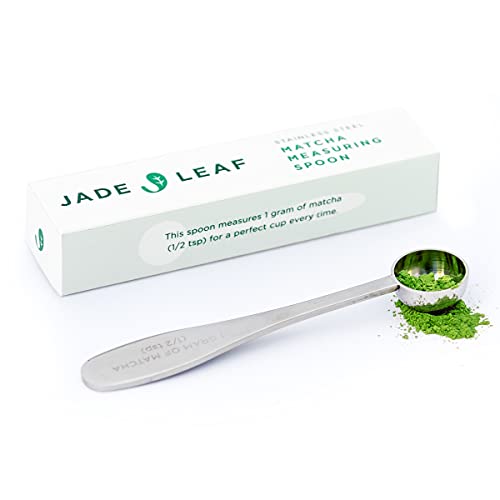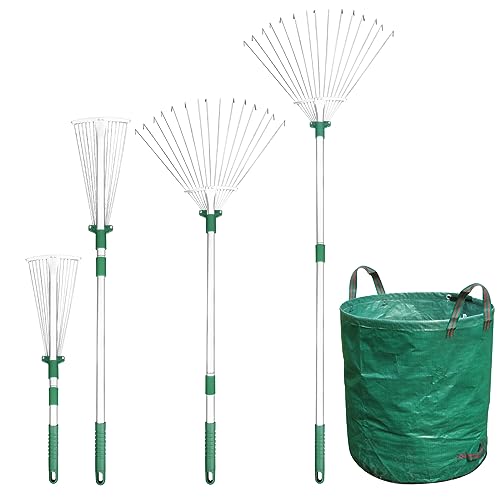Hey there! Are you a fan of matcha tea? The vibrant green color, the smooth and earthy flavor – it’s truly a unique and delightful experience. Have you ever wondered how matcha tea is actually made? Well, you’re in for a treat because in this blog post, we’re going to take you on a journey to discover the mesmerizing process behind this beloved beverage. Get ready to dive into the world of matcha and explore its fascinating origins, cultivation, and preparation. Are you excited? Let’s get started!
Discover the most popular and delicious Matcha tea blends loved by tea enthusiasts worldwide!
What is Matcha Tea?
Matcha tea is more than just a beverage; it is a centuries-old tradition that has gained popularity around the world. With its vibrant green color, unique flavor, and numerous health benefits, matcha tea has become a favorite among tea enthusiasts. In this blog section, we will delve into the details of what matcha tea actually is and why it has become so popular.
The Origin of Matcha Tea
Matcha tea has its roots in Japan, where it has been consumed for centuries as part of tea ceremonies. The tea leaves are carefully grown and harvested, then ground into a fine powder. Unlike other types of tea, which are steeped and removed, matcha tea is whisked directly into hot water, allowing you to consume the whole leaf.
The Making of Matcha Tea
Matcha tea is made from shade-grown tea leaves that are specially cultivated to enhance their flavor and nutrient content. Here is a step-by-step breakdown of the process:
- Shade Grown: The tea plants are covered with shade cloths for a few weeks before harvest, which slows down their growth and increases chlorophyll production. This gives matcha its vibrant green color.
- Hand-picked: The leaves are carefully hand-picked, selecting only the topmost new growth. This ensures the highest quality leaves for matcha production.
- Steaming: The leaves are immediately steamed to prevent oxidation, preserving their color and flavor.
- Drying and Grinding: Once steamed, the leaves are dried and destemmed before being ground into a fine powder. This process can take hours, as the grinding must be done slowly to prevent heat buildup, which can diminish the quality of the matcha.
What Sets Matcha Tea Apart?
Matcha tea is distinct from other types of tea primarily because of how it is consumed. When drinking matcha, you are not just infusing the leaves; you are consuming the entire leaf, allowing you to enjoy all of its health benefits. Here are some key points that set matcha tea apart:
- Rich in Antioxidants: Matcha tea is packed with antioxidants called catechins, which help protect against cell damage and support overall well-being.
- Boosts Energy and Focus: Matcha contains a moderate amount of caffeine along with an amino acid called L-theanine. This combination provides a calm and focused energy boost without the jitters or crash associated with coffee.
- Detoxification: The concentrated levels of chlorophyll in matcha tea are known to aid in the body’s detoxification process and promote a healthy immune system.
- Promotes Relaxation: The L-theanine found in matcha tea can help induce a sense of relaxation and mental clarity, making it a great choice for meditation or simply unwinding after a long day.
Incorporating Matcha into Your Routine
There are various ways to enjoy matcha tea, depending on your personal preference. Some popular ways include:
- Traditional Matcha: Whisking matcha with hot water using a bamboo whisk until it becomes frothy, as done in traditional Japanese tea ceremonies.
- Matcha Lattes: Mixing matcha powder with steamed milk and a sweetener of your choice. This creates a creamy, indulgent, and energizing drink.
- Matcha Smoothies: Blending matcha powder with your favorite fruits, vegetables, and a liquid base for a nutritious and refreshing smoothie.
In conclusion, matcha tea is a fascinating and unique form of green tea that offers a combination of flavor, vibrant color, and numerous health benefits. Whether you enjoy it in its traditional form or incorporate it into other recipes, matcha is sure to be a delightful addition to your daily routine. So, why not give it a try and experience the wonders of matcha for yourself?
Growing and Harvesting Matcha Leaves
Matcha tea, with its vibrant green color and unique flavor, has gained popularity in recent years. But have you ever wondered how those delicate tea leaves are cultivated and harvested to create this special beverage? In this blog section, we will take you through the fascinating process of growing and harvesting matcha leaves.
Shading for Optimal Flavor
To ensure the best quality matcha, the tea plants used are grown in shaded areas for a few weeks prior to harvest. This method, known as “shading,” is a crucial step in the production of matcha. By reducing the amount of direct sunlight that reaches the tea plants, the flavor of the leaves intensifies. This shading process also triggers the production of chlorophyll, resulting in the vibrant green color that matcha is known for.
Careful Farming for Exceptional Quality
Growing matcha requires careful attention to detail and expertise from dedicated farmers. Here are some key aspects of matcha cultivation:
- Plant Variety: Matcha is made from specific tea plant varieties, such as Camellia sinensis var. sinensis and Camellia sinensis var. assamica, that are chosen for their flavor profile and suitability for matcha production.
- Soil and Climate: Matcha thrives in specific regions with a favorable climate and soil conditions, such as Japan’s Uji, Nishio, and Kyushu regions. These areas provide optimal growing conditions, resulting in exceptional quality matcha leaves.
- Organic Cultivation: Many matcha producers opt for organic cultivation methods, ensuring that the tea plants are grown without the use of synthetic pesticides or chemicals. This not only benefits the environment but also contributes to the overall quality and taste of the final product.
Handpicked with Precision
The harvesting process of matcha leaves is meticulous and usually done by skilled farmers who have honed their craft over generations. Here’s a glimpse into the handpicking process:
- Timing: The timing of the harvest is crucial to ensure the leaves are at their finest. Typically, the harvest takes place in the spring, known as the first flush, when the tea plants produce tender new leaves that are rich in flavor and nutrients.
- Leaf Selection: Skilled farmers selectively pick the youngest and most vibrant leaves, discarding any damaged or discolored ones. This careful selection guarantees the highest quality matcha tea.
- Steaming and Drying: After harvesting, the leaves are immediately steamed to halt oxidation and preserve their freshness. They are then meticulously dried and sorted to remove any impurities, resulting in pure, premium matcha leaves ready for the next step in the production process.
Benefits of Matcha
Matcha tea offers a range of benefits that make it a popular choice among tea enthusiasts and health-conscious individuals. Here are a few key advantages:
- High Antioxidant Content: Matcha is loaded with antioxidants, such as catechins, which help to protect the body against free radicals and oxidative stress.
- Increased Energy and Focus: Matcha contains a moderate amount of caffeine, providing a natural energy boost without the jitters commonly associated with coffee.
- Calming Effect: Matcha contains an amino acid called L-theanine, which promotes relaxation and a sense of calm while improving alertness and concentration.
- Detoxifying Properties: The high chlorophyll content in matcha helps to detoxify the body and support its natural detoxification processes.
In conclusion, the journey from seed to sipping on a cup of delicious matcha tea involves careful cultivation, shading, precision harvesting, and a commitment to quality. These steps ensure that the matcha you enjoy is vibrant, flavorful, and packed with beneficial properties. So the next time you savor a cup of matcha, you’ll have a deeper appreciation for the craftsmanship and dedication that goes into each leaf.
Processing and Grinding the Leaves
Once the leaves have been carefully harvested, they go through a meticulous process to transform them into the vibrant green matcha powder we all adore. This process involves steaming, drying, deveining, and finally grinding the leaves. Let’s take a closer look at each step.
Steaming – Stopping Oxidation and Preserving Color and Nutrients
- Steaming is a vital step in the matcha production process as it helps to stop oxidation and preserve the vibrant green color and nutrients present in the leaves.
- The leaves are gently steamed, which halts the enzymatic activity and prevents the leaves from turning brown.
- By preserving the green color, the steaming process also helps to maintain the chlorophyll content present in the leaves, giving matcha its distinct green hue.
- Steaming is crucial in retaining the nutritional value of matcha since prolonged oxidation can lead to loss of essential vitamins and antioxidants.
Drying – Ensuring Optimum Texture and Flavor
- After the steaming process, the leaves are carefully dried to remove any excess moisture.
- The drying process must be done with precision to ensure that the leaves retain their texture and flavor.
- Expertly drying the leaves ensures that they do not become brittle or lose their vibrant green color.
- Maintaining the right moisture content is essential to generate the desired matcha consistency and taste.
Deveining – Removing Unwanted Parts
- Once the leaves have been steamed and dried, they undergo a process called deveining.
- This step involves removing the central veins and stems from the leaves, which are not needed in the final matcha powder.
- By removing these unwanted parts, the resulting matcha powder becomes smoother and easier to dissolve.
- Deveining also helps in eliminating any potential bitterness that may come from the stems, ensuring a more enjoyable and balanced matcha experience.
Grinding – Creating the Finely Ground Matcha Powder
- The final step in the processing of matcha involves grinding the dried and deveined leaves into a fine powder.
- Traditionally, this grinding was done using granite stone mills, which slowly pulverize the leaves into a delicate powder.
- The stone grinding process helps to evenly distribute the flavors and nutrients throughout the matcha powder, delivering a harmonious taste experience.
- Grinding the leaves into a fine powder also ensures that the matcha easily dissolves in water or other liquids, allowing for convenient and versatile consumption.
In summary, the careful processing of matcha leaves involves steaming, drying, deveining, and grinding. Each step is crucial in preserving the color, flavor, and nutritional value of the leaves, resulting in the vibrant green matcha powder we all love. Whether you enjoy matcha in a traditional tea ceremony, as a latte, or in baked goods, you can be sure that the careful processing and grinding of the leaves have played a significant role in creating a truly exceptional experience.
Making Matcha Tea
Matcha tea, known for its vibrant green color and distinctive taste, is a traditional Japanese beverage that has gained popularity worldwide. The meticulous preparation involved in making matcha is a cherished practice in the Japanese tea ceremony, showcasing the importance of mindfulness and precision in every step. In this blog section, we will explore the fascinating process of making matcha tea and discover the delightful flavors and benefits it offers.
The Ingredients and Tools You’ll Need
To start your matcha tea journey, gather the following ingredients and tools:
- Matcha powder: Look for high-quality, ceremonial-grade matcha for the best flavor and health benefits.
- Hot water: For traditional matcha, water heated to around 175°F (80°C) is recommended.
- Bamboo whisk (chasen): The chasen is a vital tool to create a frothy and smooth matcha drink.
- Matcha bowl (chawan): A wide, shallow bowl is ideal for whisking and enjoying your matcha.
Step-by-Step Guide to Making Matcha Tea
Follow these steps to create a perfect cup of matcha tea:
- Sift the matcha powder: Using a small sieve or sifter, sift the matcha powder into your matcha bowl. This eliminates any clumps, ensuring a smooth texture.
- Warm the matcha bowl: Pour a small amount of hot water (about 1/4 cup) into the matcha bowl. Swirl the water around to warm the bowl, then discard the water. This step helps maintain the optimal temperature for brewing matcha.
- Measure the matcha powder: Use a bamboo scoop or teaspoon to measure the desired amount of matcha powder. It’s typically recommended to use 1 teaspoon (about 2 grams) for every 2 ounces (60ml) of hot water.
- Add hot water: Pour the heated water into the matcha bowl, covering the powder. Remember to use water at the recommended temperature to preserve the delicate flavors of matcha.
- Whisk with a chasen: Holding the chasen in one hand, whisk the matcha and water vigorously in a “W” or “M” motion until it creates a frothy layer of tiny bubbles on the surface. This step helps achieve the smooth and creamy texture of the tea.
- Enjoy your matcha: Gently lift the chasen from the bowl and take a moment to appreciate the vibrant green color and delightful aroma of your matcha tea. Drink it directly from the matcha bowl and savor every sip!
The Unique Delights of Matcha Tea
Matcha tea offers a range of benefits, both in taste and health. Here are some key points to entice you further:
- Distinctive flavor: Matcha possesses a unique umami flavor with a pleasantly bitter undertone, rich in vegetal notes. It’s unlike any other tea you’ve tried.
- Calming alertness: Matcha contains an amino acid called L-theanine, which is known to promote a relaxed yet focused state of mind. It provides a gentle energy boost without the jittery feeling often associated with coffee.
- Antioxidant powerhouse: Matcha is packed with antioxidants, known as catechins, which help protect the body against cell damage caused by free radicals.
- Enhanced metabolism: The catechins in matcha, specifically EGCG (epigallocatechin gallate), have been found to help boost metabolism and support weight loss when combined with a healthy lifestyle.
- Nutritional goodness: Matcha tea is a nutritional powerhouse, providing a concentrated source of vitamins, minerals, and fiber. It’s particularly rich in vitamin C, vitamin A, potassium, and iron.
In Conclusion
Create a moment of tranquility in your day by embracing the art of making matcha tea. With its vibrant green color, frothy texture, and unique flavor profile, matcha is sure to delight your senses. Whether you’re seeking a calm alertness or a nutrient-rich beverage, matcha tea offers a delightful experience that is both enjoyable and beneficial to your well-being. So, why not give it a try and embark on a journey of mindful sips and flavorful discoveries?
Discover the art and science behind creating the perfect cup of matcha tea!
So there you have it! Matcha tea is truly a fascinating drink that goes through a careful and intricate process before it reaches your cup. Its beautiful green color, special taste, and multitude of health advantages have made it a favorite among tea lovers worldwide. Whether you’re interested in experiencing a traditional Japanese tea ceremony or simply want to savor a flavorful cup of tea, matcha is a must-try! Give it a go and discover the delight of matcha for yourself. Cheers!














